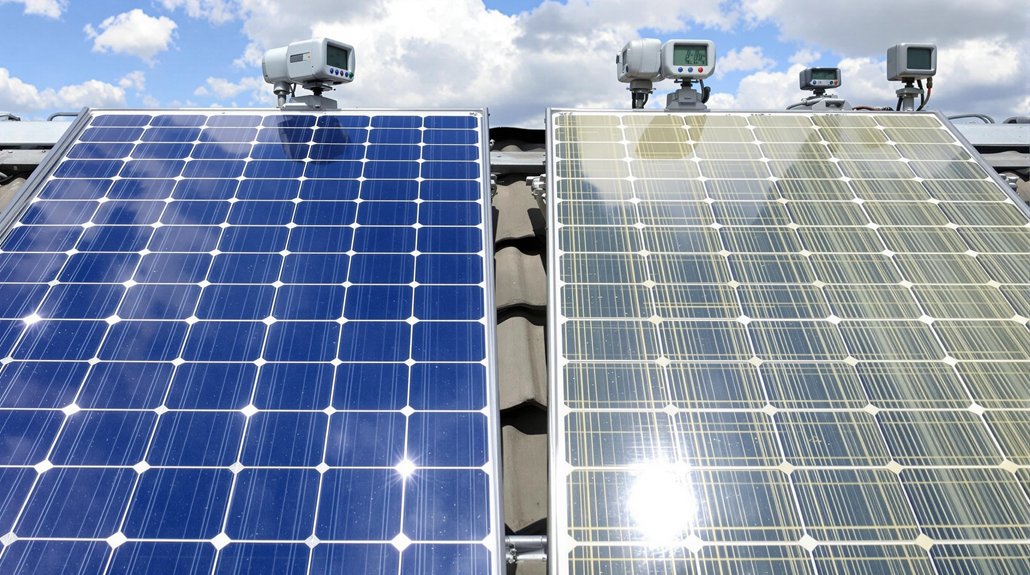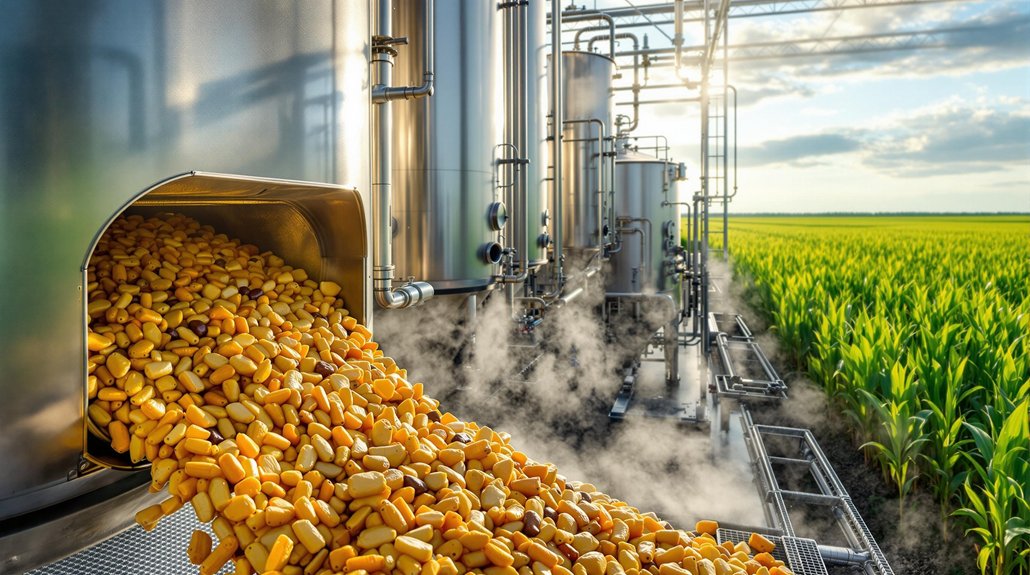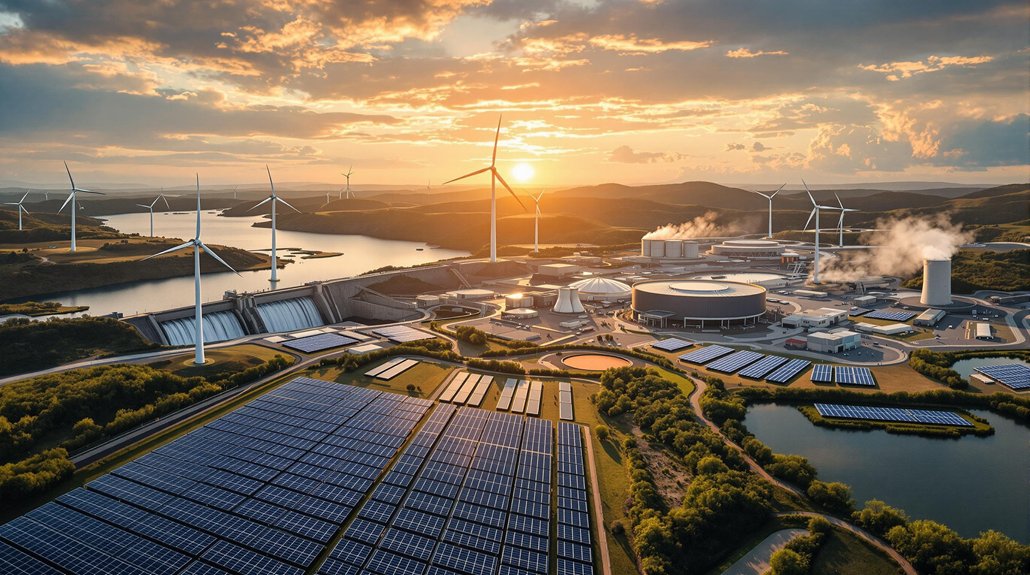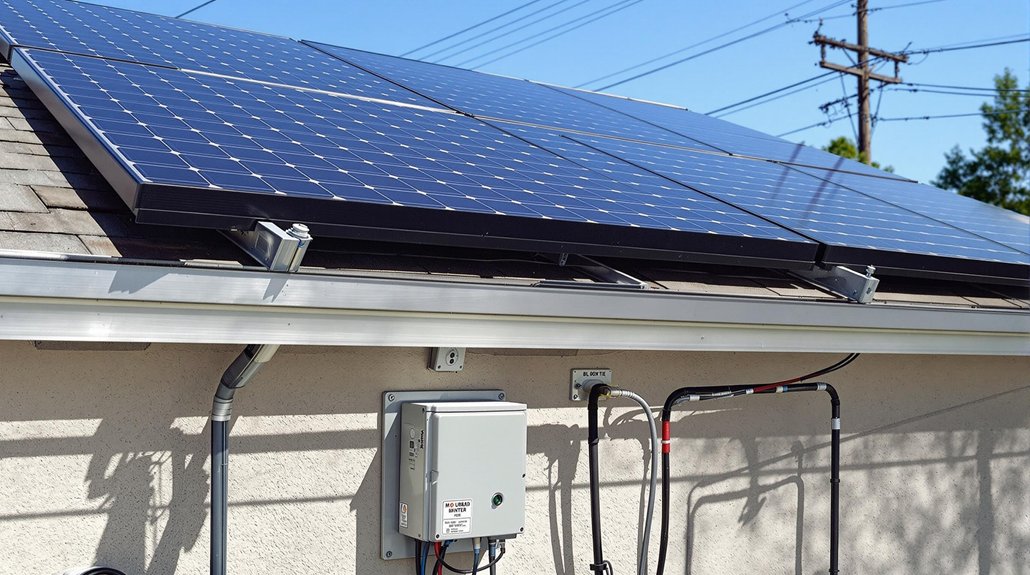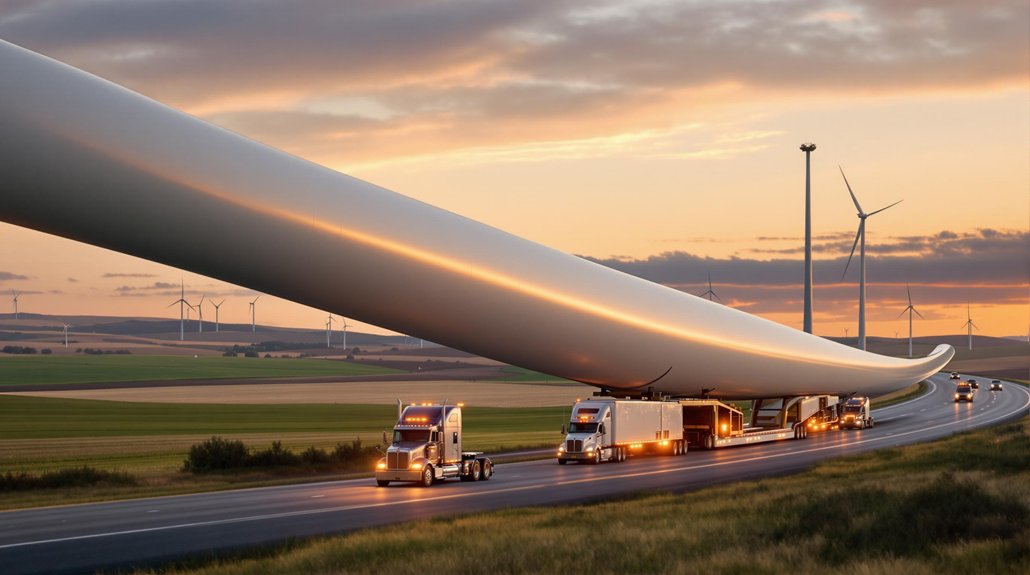Solar panels typically lose 0.5% to 0.8% of their electricity production capacity each year. The first year shows the biggest drop, with a 2-3% loss due to light-induced degradation. High-quality panels may degrade at just 0.3% annually, while harsh environments speed up deterioration. Most manufacturers warranty 90% performance after 10 years and 80% after 25 years. Several factors determine how quickly your panels will lose efficiency.
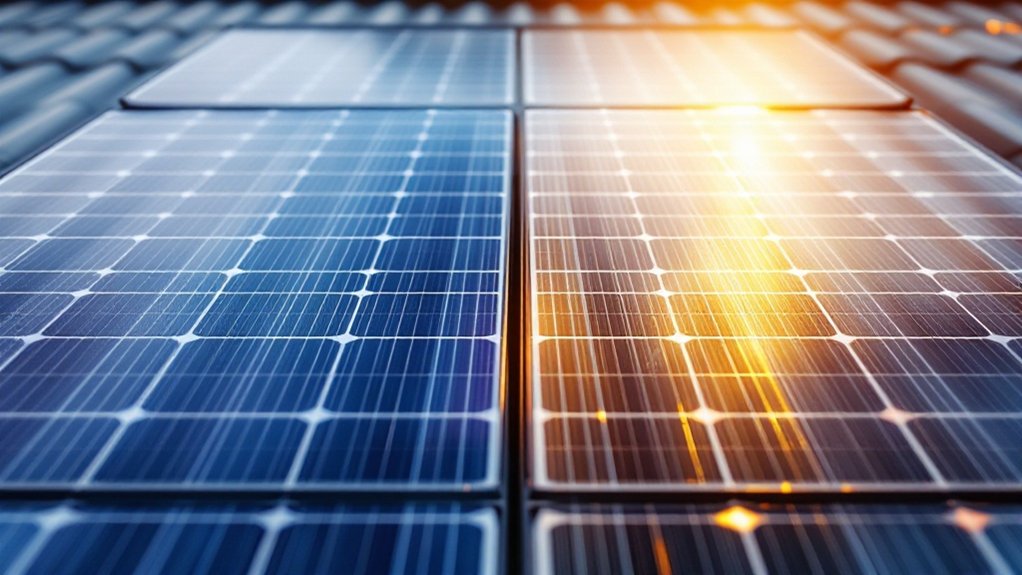
The shine of a new solar panel doesn’t last forever. Like most technology, solar panels gradually produce less electricity over time. This natural process is called degradation. Most solar panels lose about 0.5% to 0.8% of their production capacity each year. Higher quality panels perform better, with degradation rates as low as 0.3% annually.
The first year of a solar panel’s life often sees the biggest drop in performance. Panels typically lose 2-3% of their capacity during this initial period due to light-induced degradation (LID). This happens when sunlight first activates the silicon cells. After this initial drop, the degradation slows to the normal yearly rate.
Solar panels experience their steepest efficiency drop during year one, when sunlight activation causes 2-3% capacity loss.
Several factors affect how quickly solar panels degrade. Climate plays a major role – extreme temperatures, high humidity, and intense UV exposure can speed up degradation. Panel quality and manufacturing processes also matter. Poorly made panels degrade faster than premium ones. Even how the panels are installed and maintained impacts their lifespan. Physical damage from hail strikes and flying debris can significantly accelerate degradation rates. Despite degradation, most modern solar panels have a useful lifespan of 25 to 30 years before efficiency decreases significantly.
Different types of degradation affect solar panels. Beyond LID, panels can suffer from potential-induced degradation when voltage leaks between cells and frames. Thermal cycling causes tiny cracks as panels expand and contract with temperature changes. UV exposure breaks down protective materials, while moisture can lead to corrosion of electrical connections. Another serious form of degradation is Light and Elevated Temperature Induced Degradation which can result in performance losses of up to 6% in the first year.
Solar panel owners can detect degradation through various monitoring techniques. Regular performance checks, specialized imaging, and data analysis help spot problems early. The industry has developed ways to slow degradation, including better manufacturing techniques and proper installation methods.
Most manufacturers design their warranty periods around expected degradation rates. Typically, warranties guarantee panels will produce at least 90% of their rated power after 10 years and 80% after 25 years. This reflects the industry’s confidence that quality panels will continue producing electricity for decades, though at gradually decreasing efficiency.
Frequently Asked Questions
Does Weather Affect Degradation Rates in Different Regions?
Weather markedly affects solar panel degradation rates across regions.
Hot, humid climates like Northern Australia see faster degradation (0.8-1% yearly) compared to dry, cold areas (0.4-0.5% yearly).
Coastal locations face increased corrosion from salt spray.
Extreme weather events including hail, high winds, and heavy snow accelerate damage.
The U.S. Southwest experiences high degradation from intense heat and UV exposure, while Central Australia’s dry conditions cause slower deterioration.
Can Degradation Be Slowed With Proper Maintenance?
Degradation of solar panels can indeed be slowed with proper maintenance.
Regular cleaning removes efficiency-reducing debris like dust and pollen. Professional installation at the correct angle maximizes performance. Monitoring systems help detect issues early.
Environmental protection measures, including trimming nearby trees and installing critter guards, prevent damage.
While panels will naturally degrade over time, these maintenance practices help systems maintain higher efficiency levels throughout their operational lifespan.
Are Some Brands More Resistant to Degradation Than Others?
Yes, some solar panel brands show remarkably better resistance to degradation.
SunPower and REC lead with only 0.25% annual degradation after the first year. Panasonic follows closely at 0.26%, while LG shows 0.33%.
These top manufacturers use superior materials like N-type silicon cells and better construction methods. Their confidence shows in longer warranties, with SunPower and REC guaranteeing 92% output after 25 years.
How Does Degradation Impact Warranty Claims?
Degradation impacts warranty claims when solar panels degrade faster than the rates specified in performance warranties.
If panels produce less power than guaranteed (typically 90% at 10 years and 80% at 25 years), owners can file claims. Manufacturers may repair, replace panels, or offer pro-rated refunds. Claims require documentation showing actual performance below warranted levels.
Proper installation and maintenance are essential, as unauthorized modifications can void warranty protection.
Can Degraded Panels Be Recycled or Refurbished?
Degraded solar panels can be recycled or refurbished.
Recycling involves disassembly, mechanical crushing, thermal processing, and chemical extraction with high recovery rates for materials.
Refurbishment options include repairing microcracks, replacing damaged components, and reusing panels in less demanding applications.
The recycling market is growing rapidly, while refurbishment costs 60-70% less than buying new panels.
Both approaches reduce waste and conserve resources in the solar industry.
